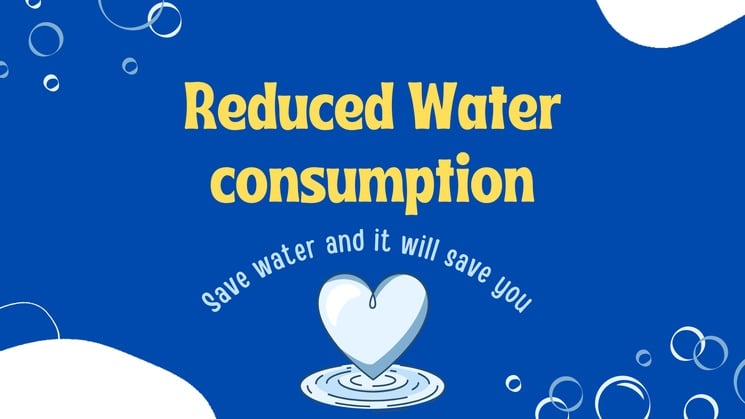I’m sitting here in my kitchen and looking at the fridge I thought… its energy efficiency class is A+, it’s incredible that this fridge is using just a fraction of the electricity that my old model was consuming. Yet many people don’t seem to realize the great benefits of green technology, so I decided to write about it.

benefits of green technology Explained
What is green technology and its benefits? First of all, green technology is an umbrella term that refers to a diverse range of technologies and practices that can be used to minimize environmental impact.
What is the significance of green technology and its benefits? Why is green technology important? Here are some of the advantages of green technology to the environment!
Green technology helps reduce energy and water consumption, reduces waste, reduces our carbon footprint, and improves business efficiency by lowering costs while improving product design and creating new jobs.
Compared to traditional technologies, green technology reduces the impact on the environment, reduces costs, and improves our quality of life.
There are many new and exciting green technology examples out there. Many innovative startups and companies are developing impressive green tech products to help us become more eco-friendly.
This shows the importance of green technology. Green tech is a rapidly growing business area because of the advantages it delivers to every area of our lives.
How does green technology help the environment? Here are the top 10 benefits of green technology defining the advantages of going green for businesses and people!
1. Reduces Energy consumption

Green technology helps to reduce energy consumption by pursuing energy efficiency in every aspect of the product lifecycle.
Efficient machinery will reduce the energy needed for manufacturing, while sustainable product design will be applied to minimize the energy consumption of the finished product, enabling savings for both the business and the consumer.
In addition, thanks to technologies such as solar panels (which can also increase the value of your home), hydropower, or wind turbines, green tech is also helping to reduce the use of traditional non-renewable energy sources such as fossil fuels (also for sailboats and RVs!).
For example, there are many advantages and disadvantages of hydroelectric power, but this green tech is one of the first ones that humanity tapped into and contributed greatly to reducing our reliance on fossil fuels.
Businesses and households can easily knock off their energy bills by simply transitioning to a green tech solution. For example, CA Technologies was able to cut their lighting energy bill by 50% almost overnight by simply replacing old light bulbs with modern LED lights.
Other green technologies coming into the market will allow you to save up to 10% of the electricity used by your devices thanks to a smart power extender managed by artificial intelligence.
Reducing energy consumption is certainly one of the most evident advantages of green technology.
2. Reduces waste thanks to recycling

Recycling has the benefit of turning waste into a resource. It is an amazing green technology that helps to reduce waste and at the same time, it allows to recover raw materials that can be used to create new products.
Recovered materials are reducing the amount of solid waste reaching landfills and at the same time, they are also reducing the need to continuously extract new raw materials from our planet, helping to preserve its natural resources.
An amazing example of the impact this green technology can have is cardboard recycling, thanks to which it is possible to dramatically reduce the need to cut down new trees.
Both businesses and the environment are benefiting from this because the cardboard is not ending up in the landfill and companies can also make some profit by recycling it!
3. Improves product design and performance

The increased public awareness about sustainability and environmental challenges coupled with market competition led to greater attention towards efficient and sustainable designs. Improving not only the product performance but also the manufacturing processes, the choice of materials, design methodologies, and much more.
Modern product design is leveraging powerful digital transformation technologies such as digital twins and machine learning to optimize product performance, longevity, manufacturing process, and lifecycle. The use of green tech allows the creation of more eco-friendly products with a smaller carbon footprint.
For example, the aerodynamics of modern cars are optimized to reduce fuel consumption by minimizing the drag caused by the airflow when the car is moving. This is achieved thanks to a sophisticated aerodynamic design developed mainly using a digital twin such as Computational Fluid Dynamics (CFD).
Other digital twins such as Finite Element Methods (FEM) are used to improve the structural resistance of the car’s chassis while also reducing its weight. Reducing the number of raw materials needed to produce a new car.
Those technologies are continuously evolving and achieving new performance and eco-friendly goals. More importantly, the digital tools that are used are becoming more eco-friendly thanks to green computing.
Nowadays giant leaps in product design can be achieved by using minimum amounts of electricity “simply” by combining the power of machine learning and digital twins.
The first industrial application of this new generation of technologies was developed by Neural Concept and it can allow the optimization of the aerodynamics of a new car in seconds!
The advantages that green technology can bring to product design are endless!
4. Reduces Business Expenses

While the procurement costs of green technologies can be quite high, in most cases those investments are paying for themselves thanks to the savings and competitive advantages they deliver in the long run.
This is because green tech is designed to use energy and resources more efficiently as well as enable new capabilities. For example, purchasing and installing solar panels can be expensive at first, but then the business (or house) will enjoy important cost savings thanks to a lower electricity bill.
Buildings that have solar panels have benefits for the environment because can produce considerable amounts of electricity. In the long run, those savings will pay off the initial procurement expenses, and then your business will benefit from lower expenses for your energy.
5. Facilitates Eco-friendly agriculture

Green technologies are benefiting agriculture by enabling more eco-friendly ways to grow food.
One of the greatest concerns about agriculture is the use of water. Water is abundant on our planet, but freshwater is instead quite rare. Only 3% of the water is freshwater and large amounts of it are used every year to grow food.
A green technology that is benefiting agriculture by helping to reduce water consumption is hydroponics. Thanks to this tech, it is possible to grow food using only a fraction of the water necessary with traditional methods.
Sustainable water purification is another green tech that could revolutionize agriculture and, more in general, the freshwater problem on our planet.
Additional green methods used to make agriculture more Eco-Friendly are integrated pest management. This allows for avoiding using pesticides because animal species that are predators of the pests that can affect a specific culture are introduced into the crop’s ecosystem.
Those are just a few examples of the benefits of green tech in agriculture and food production.
6. Reduces Water consumption

Water is a precious resource on our planet, and making sure to not waste it is paramount. Industrial processes and households are using large quantities of water. Green technology helps to reduce water consumption.
For example, if you have a new washing machine it is very likely to be not only more energy efficient but also to use much less water to wash your clothes compared to an older model.
This can be achieved by using green tech to improve the product design or to add smart functionality, allowing to save water by using only what is strictly necessary for the task.
The difference between a washing machine equipped with green technology and a traditional one can be huge, in fact, eco-friendly washing machines use up to 74% less water than older models.
Many industrial processes are also using a lot of water. As for the previous example, engineers are also improving the design of industrial machinery to reduce water consumption.
This is not only done for the environment but also for cost reasons: a machine that uses less water, less energy, and requires less maintenance is not only more eco-friendly but also cheaper to run for the business.
7. Reduces air pollution in the cities

Traffic and polluting industries are the major contributors to air pollution in our cities. Green technologies such as hybrid and electric vehicles are increasingly been used and incentivized to reduce air pollution in the cities.
Electrification of transport technologies is an important step in the right direction, especially if the necessary power to run those vehicles is obtained from renewable and clean sources.
Another green methodology that helps reduce air pollution in the cities is sustainable urban design. Thanks to mindful urban planning and design it is possible to increase the green areas with oxygen producing trees and improve ventilation.
There is no doubt that in the coming years, the air in our cities will become cleaner thanks to those green technologies.
8. Reduces overall carbon footprint

From green energy to recycling and more rational use of natural resources, green energy is going to play a big role in helping us reduce our carbon footprint.
Many new green technologies are being developed for this, from carbon capture and storage to biogas.
Reducing the carbon footprint is especially challenging for energy-intensive industries like mining. In some cases, it may not be possible to switch the mining vehicles to electric and use only renewable energy.
That’s where green technologies can help in a different way: more and more industries are voluntarily offsetting their carbon emissions by buying carbon credits.
Carbon credits are obtained by companies when they do something to reduce the levels of CO2 in the atmosphere, for example planting trees or preserving a forest that was otherwise destined to be cleared.
Technology such as satellites can be used to monitor the sources of those carbon credits, for example ensuring that an area of forest is really being preserved.
9. New employment opportunities

One of the benefits of green technology for society is for sure represented by the new employment opportunities offered by this thriving sector of the economy.
So much so that at present, only on Indeed are listed more than 30,000 green technology job openings!
The need for people with the right expertise in sustainable technology solutions has been growing for a while and it is certainly more than just a passing trend!
10. Tax incentives

Governments are getting more and more on board to support the journey towards sustainable development.
Subsidies and tax incentives to switch to green technologies are now very common in the US and the EU. As well as research grants targeted the development of eco-friendly technologies.
As a consequence, an additional advantage of green technology is being able to benefit from tax incentives and other grants that governments are supporting to promote the green revolution and help save the planet.
Green technology benefits types
The benefits of green technology are of 3 types: environmental, economic, and social. Those are helping to achieve sustainable development by acting on all three pillars of sustainability.
Among the goals of green technology, the main one is to help us reduce our environmental footprint, and protect the future of the planet by conserving its natural resources and trying to repair the damages made in the past.
The nice thing is that, while doing this, we are also getting important economic and social benefits as well!
It is not by chance that green technologies can be found in so many examples of sustainable development while our society moves more and more toward sustainability.
1. Environmental Benefits
Green technology benefits environmental sustainability by reducing waste and making the production and design processes more efficient.
Advantages of green technology for the environment include things such as renewable energy, reduced energy consumption, reduced use of raw materials, recycling, reduced product maintenance, longer-lasting products, and more.
2. Economic Benefits
The economic benefits of green technology are generated by improved efficiency.
These include things such as saving on the energy bill, reduced need to purchase raw materials for production, improved efficiency of the manufacturing processes, improved automation, competitive advantages for your product or service, tax incentives, and more.
3. Social benefits
Society at large is also benefiting from green technologies because of the improved environmental conditions as well as the new employment opportunities offered by this growing area of the economy.
The urban setting is also benefiting from smart buildings, sustainable urban design and more green areas, allowing better spaces to foster great social relationships and thriving local communities.
Green technologies help to get cleaner air in the cities, reduce waste and food produced locally, and contribute to improving the standards of living.
Conclusions
In conclusion, it’s clear that green technology allows us to use renewable resources, conserve energy, and clean up the planet. By using green technology, we can help reduce pollution and protect the environment.
I hope that this article helped you to realize the deep impact that those technologies are having on our lives. Here’s why green technology is important!
The main benefits of green technology are:
- Reduced energy consumption
- Reduced waste
- Improved product design and performance
- Reduced business expenses
- Eco-friendly agriculture
- Reduced water consumption
- Reduced air pollution
- Reduced carbon footprint
- Employment opportunities
- Tax incentives and government grants
Those green technology advantages cover all the areas of sustainability, with benefits for the environment, the economy, and society.
For those reasons green technologies are one of the main tools that will allow us to reach the sustainable development goals, we are setting ourselves for this decade.
Some of those are also similar to the benefits of industry 4.0. This is because, as seen in many industry 4.0 examples, those technologies can further enhance the benefits of green technology and help us reach sustainability.

